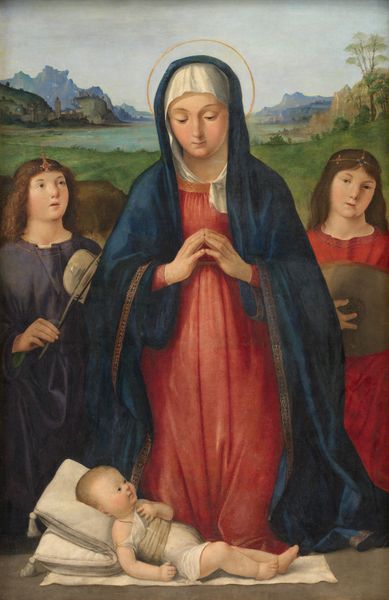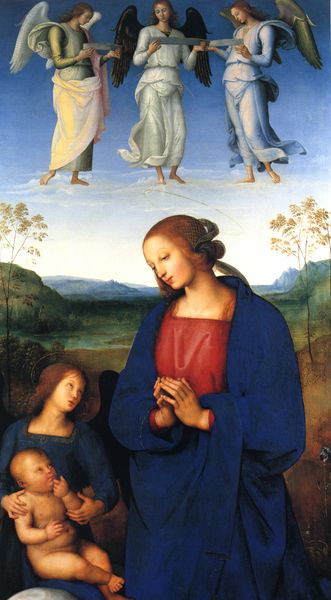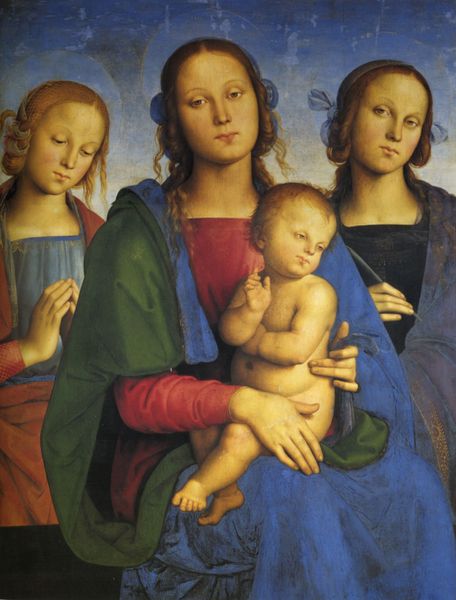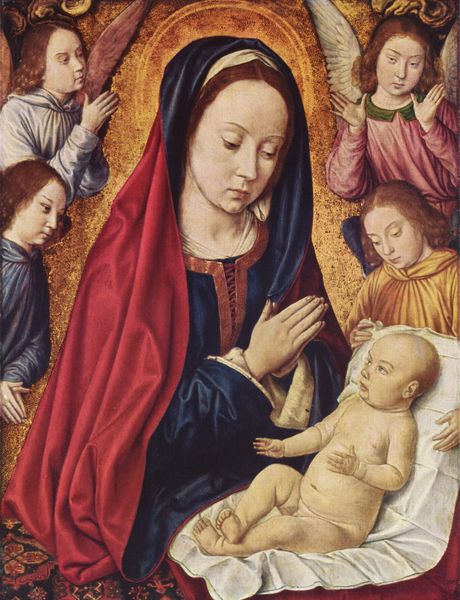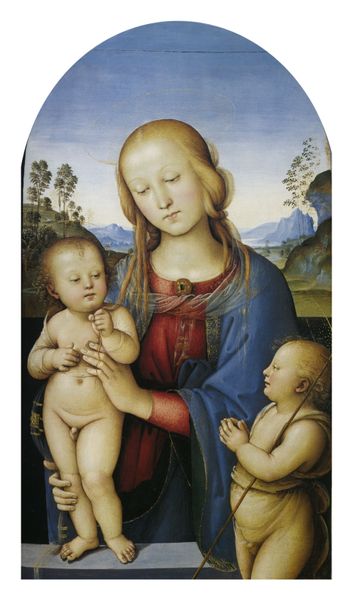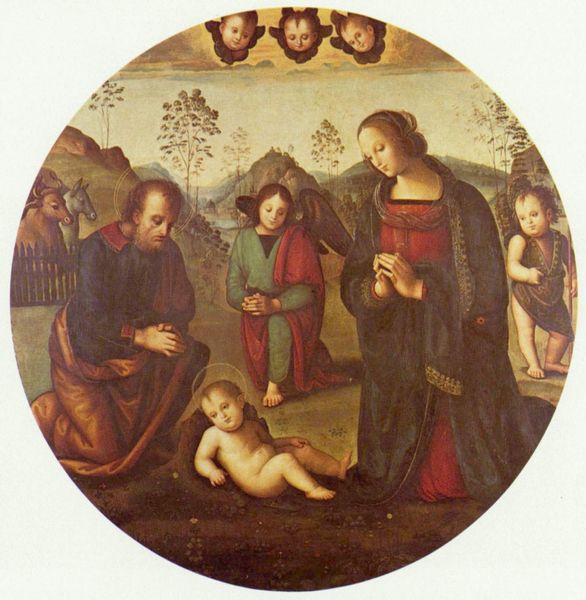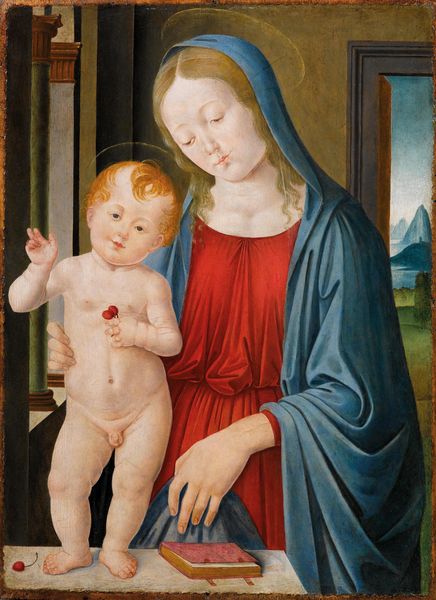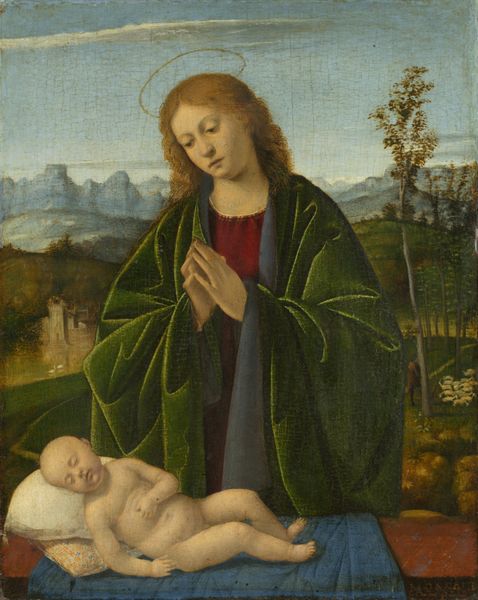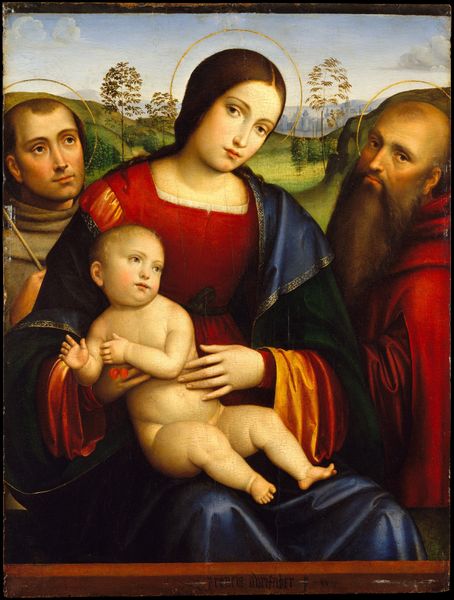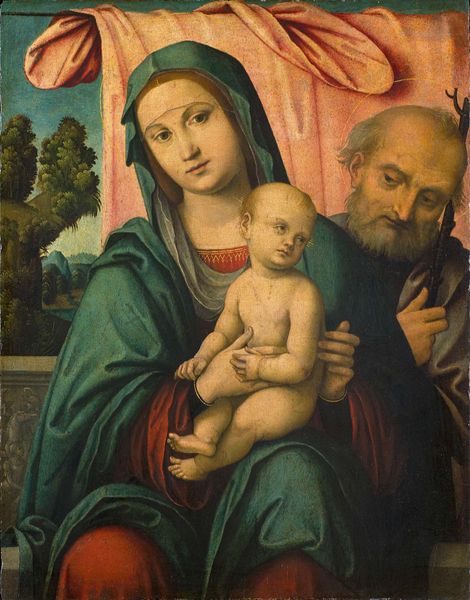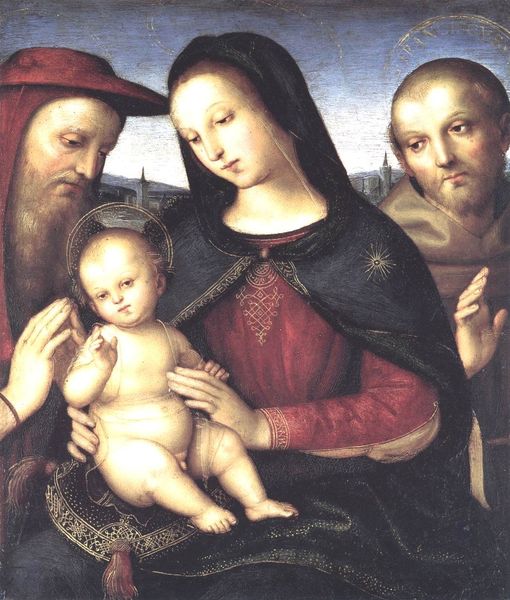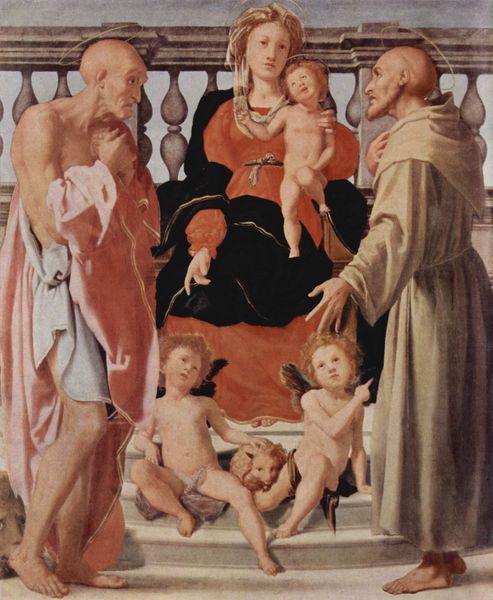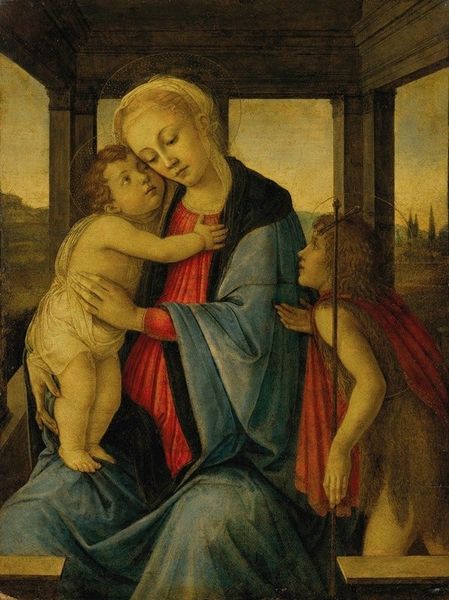
Madonna with saints adoring the child 1503
0:00
0:00
pietroperugino
Musée des Beaux-Arts de Bordeaux, Bordeaux, France
painting, oil-paint
#
portrait
#
painting
#
oil-paint
#
figuration
#
oil painting
#
history-painting
#
italian-renaissance
#
early-renaissance
Dimensions: 87 x 72 cm
Copyright: Public domain
Curator: The oil painting you’re looking at is titled "Madonna with Saints Adoring the Child," crafted by Pietro Perugino around 1503. It's a stunning example of the Early Renaissance style. Editor: There’s something quite serene about it. The figures seem bathed in soft light, and the colours, despite being muted, give off this incredible warmth. How does Perugino achieve such delicate execution with oil? Curator: That’s where his technique really shines. Perugino was known for meticulous glazing; layers of thin, translucent paint to build up color and form gradually. Think of how that would affect the material costs, availability, and even the workshops he was using. Editor: You know, viewing this in Bordeaux today in a museum is vastly different from its original context. What would have influenced its reception at the time? Was it made for private devotion, or a public space? Curator: It probably catered to elite patronage, intended to reflect status. That soft, harmonious style embodied Renaissance ideals of beauty and order. Remember too the politics around religious imagery at the time, especially in how a painting like this supported religious institutions. Editor: Absolutely, there’s an interesting social tension playing out: an image designed for contemplative focus that also functions as a marker of social standing. And the saints themselves; what story were they telling viewers about models of proper behavior? Curator: We might read that comportment, with careful analysis. The saints provide examples of piety, while the idealized Madonna projects grace. The canvas and paints were manufactured, the colours were grinded... Each detail reminds of a system of production in fifteenth century workshops. Editor: Reflecting on its journey across centuries, from Perugino’s studio to the Musée des Beaux-Arts de Bordeaux, truly brings to life the complex social factors that informed both its making and continuous remaking in art history. Curator: Precisely! Understanding how the piece was physically crafted – the labor, the material choices – gives depth to those themes you've raised about social and religious meaning of Renaissance painting, something an artwork like this really inspires.
Comments
No comments
Be the first to comment and join the conversation on the ultimate creative platform.
